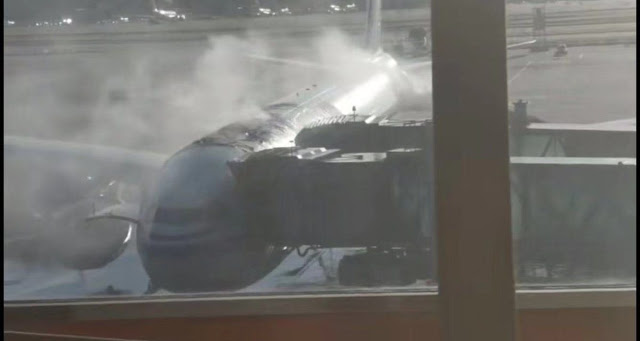The recent fire on the Air China A330 jet at Beijing’s Capital International Airport on Tuesday 27 August 2019, could cost the company 1.7 billion Yuan (US $237 million). As passengers began boarding the plane destined for Tokyo, Japan, cabin crew reported smoke and fumes being emitted from the cargo bay, beneath the passenger cabin area. Passengers and crew members were quickly evacuated to safety via the air-bridge. Preliminary investigations reported that the fire was connected to lithium battery packs that were stored in the main deck cargo compartment. The incident prompted Beijing’s Capital International Airport to forbid the transportation of cargo containing lithium battery products, pending further investigations.
The fire on-board the Air China plane was not the first time that Lithium batteries were implicated in an aviation disaster. In 2010, a UPS Boeing 737 cargo plane crashed in the United Emirates due to an in-flight fire caused by the auto-ignition of more than 80,000 lithium batteries. A report issued by the Federal Aviation Administration (FAA) in 2013, predicted an average of six flight disasters would occur between 2012-2021 if no action were taken to mitigate the risk of fire due to dangerous goods such as bulk shipments of lithium batteries.
Air Freight-Dangerous Goods
Dangerous goods are defined by the Australian Government, Civil Aviation Safety Authority (CASA) as those goods or articles that could pose a significant threat to health safety and property when transported by air. The nine primary classes of dangerous goods each have a corresponding label that identifies the properties of the goods. The identifying labels must be secured to the outside of the package and must remain in situ while the goods are in transit.
Hazard Labels
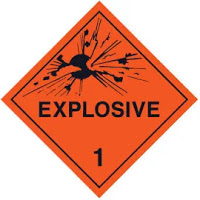
CLASS 1 EXPLOSIVES
Explosive substances & articles and pyrotechnic devices. Including, fireworks, ammunition, detonators etc.
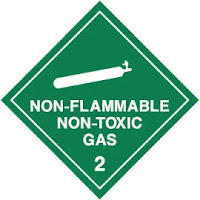
CLASS 2 GASES
Compressed, liquefied, refrigerated liquefied or gas in solution, including aerosols. Three subdivisions include:
2.1- Flammable gases.
2.2- Non-flammable, non-toxic gases.
2.3- Toxic gases.
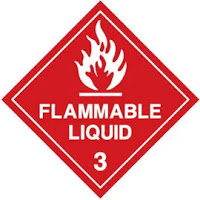
CLASS 3 FLAMMABLE LIQUIDS
Liquids with a boiling point of 35 degrees C or less, or those with a flashpoint of 60 degrees C or less. E.g. alcohol, petrol.
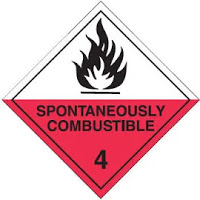
CLASS 4 FLAMMABLE SOLIDS
Substances that are prone to spontaneously combust, including substances that emit flammable gases upon contact with water. Three subdivisions include:
4.1- Flammable solids, self-reactive substances and desensitised explosives.
4.2- Substances that spontaneously combust. E.g. Phosphorus after being exposed to air.
4.3- Substances that emit flammable gases upon contact with water. E.g. Sodium, zinc particles.
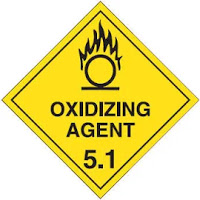
CLASS 5.1 OXIDISING SUBSTANCES
Goods or substances that produce oxygen that in turn may contribute to the spontaneous combustion of other goods/substances.
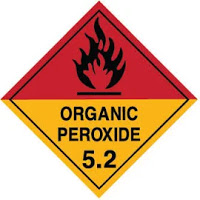
CLASS 5.2 ORGANIC PEROXIDES
Thermally unstable substances that are susceptible to heat-generating, self-accelerating decomposition. Reactions are often sensitive to impact or friction, explosive and rapid.
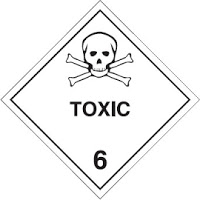
CLASS 6.1 TOXIC SUBSTANCES
Substances that are likely to cause injury or death if swallowed, inhaled or absorbed through the skin.
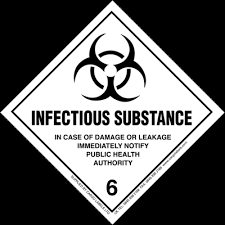
CLASS 6.2 INFECTIOUS SUBSTANCES
Substances that are known to contain pathogens.

CLASS 7 RADIOACTIVE MATERIAL
Any material or goods containing radionuclides.
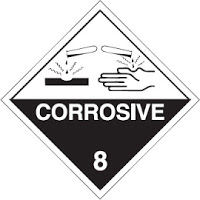
CLASS 8 CORROSIVES
These substances cause severe damage to property and living tissue once they leak.
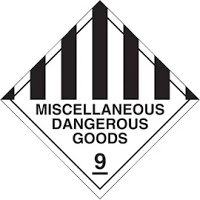
CLASS 9 MISCELLANEOUS
Miscellaneous goods such as those with magnetic components that could react with dry ice, combustion engines and the aircraft’s compass.
The four handling labels that accompany the appropriate labels include:

1. This way up.
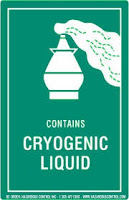
2. Cryogenics.
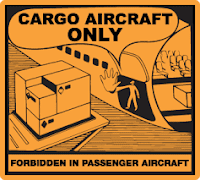
3. Must not be placed on a passenger plane.
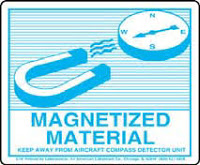
4. Magnetic material.
There are strict regulations regarding the marking, labelling, packaging, and declaring of dangerous goods for transportation by air. Trained personnel must take the necessary precautions to ensure that ALL dangerous goods are lodged with a professional freight forwarding company or airline and are declared accordingly.
Businesses transporting goods by air freight have a legal responsibility to ensure that dangerous goods are managed professionally to ensure the utmost safety precautions are maintained. Dangerous cargo should be accompanied by a ‘Material Safety Data Sheet‘ (MSDS) that identifies:
Identification of the material and the supplier.
Hazards identification.
Composition/information on ingredients.
Fire fighting measures.
Accidental release measures.
Handling and storage.
Exposure controls/personal protection.
Physical and chemical properties.
Stability and reactivity.
Toxicological information.
Ecological information.
Disposal considerations.
Transport information.
Regulatory information.
Other information-references, abbreviations and acronyms.
People and companies sending dangerous goods by air, face hefty financial fines and/or up to seven years imprisonment for inferior packaging, labelling and documentation that do not meet Civil Aviation legislation.
The preliminary investigation into the fire onboard the Air China A330 plane raised valid questions about whether the volatile lithium batteries were being transported as part of a consignment or were part of the planes power supply. Nevertheless, this highlights the importance of diligent safety protocols. In an age of globalisation, where international trade continues to boom, it is essential that authorities maintain strict control over the transportation of dangerous goods as a matter of international safety and security. Businesses wishing to transport dangerous goods by air should consult a highly reputable air freight forwarder to ensure that every precaution is met for the safety of all.
Recent posts
Sign up and stay update
Follow us
